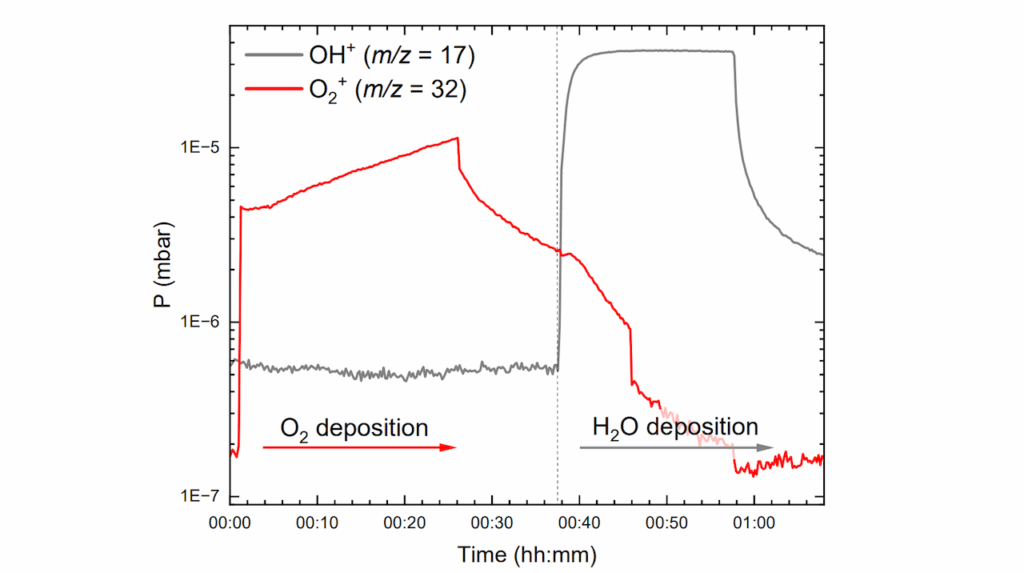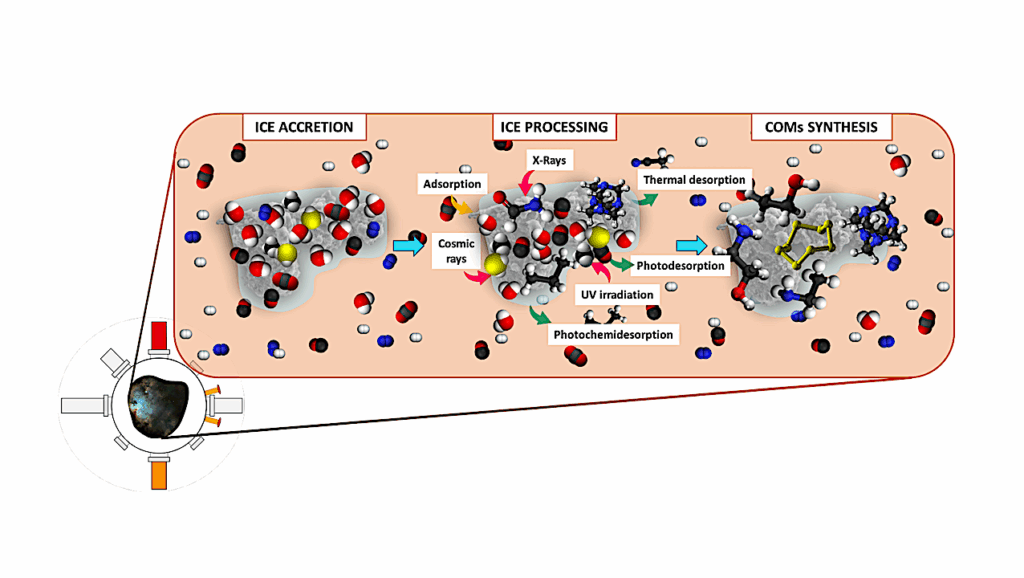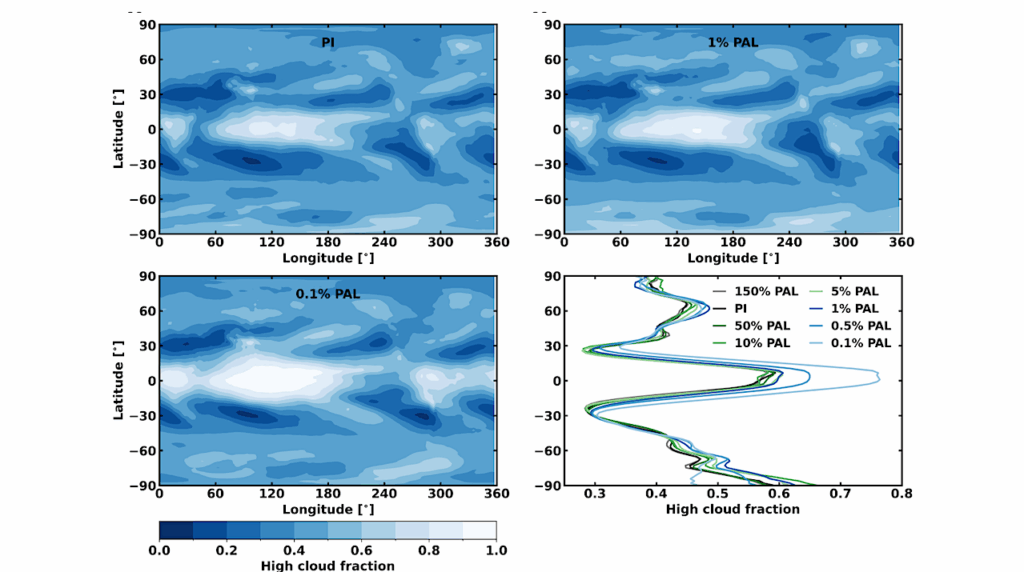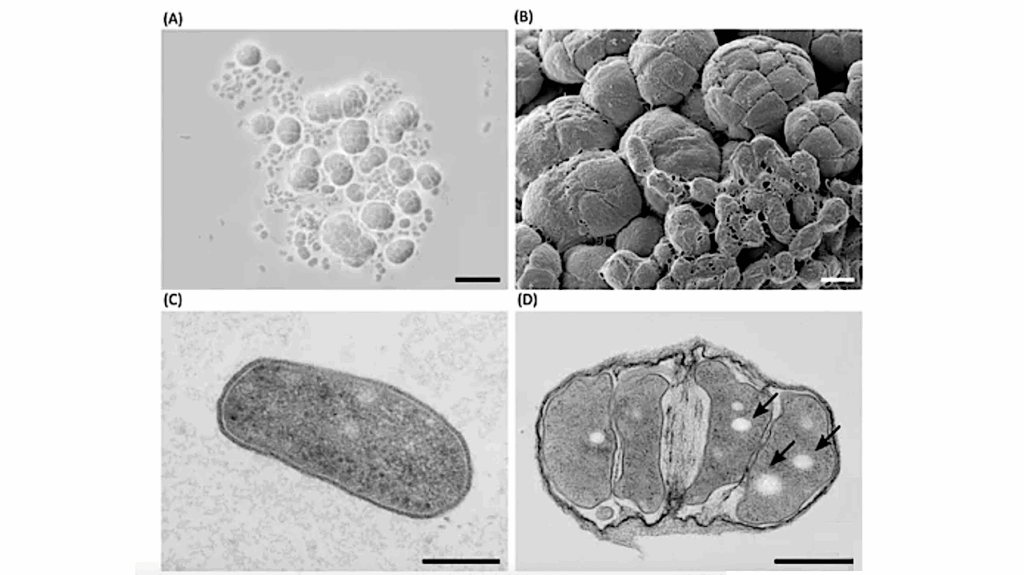On The Role Of α-alumina In The Origin Of Life: Surface-driven Assembly Of Amino Acids
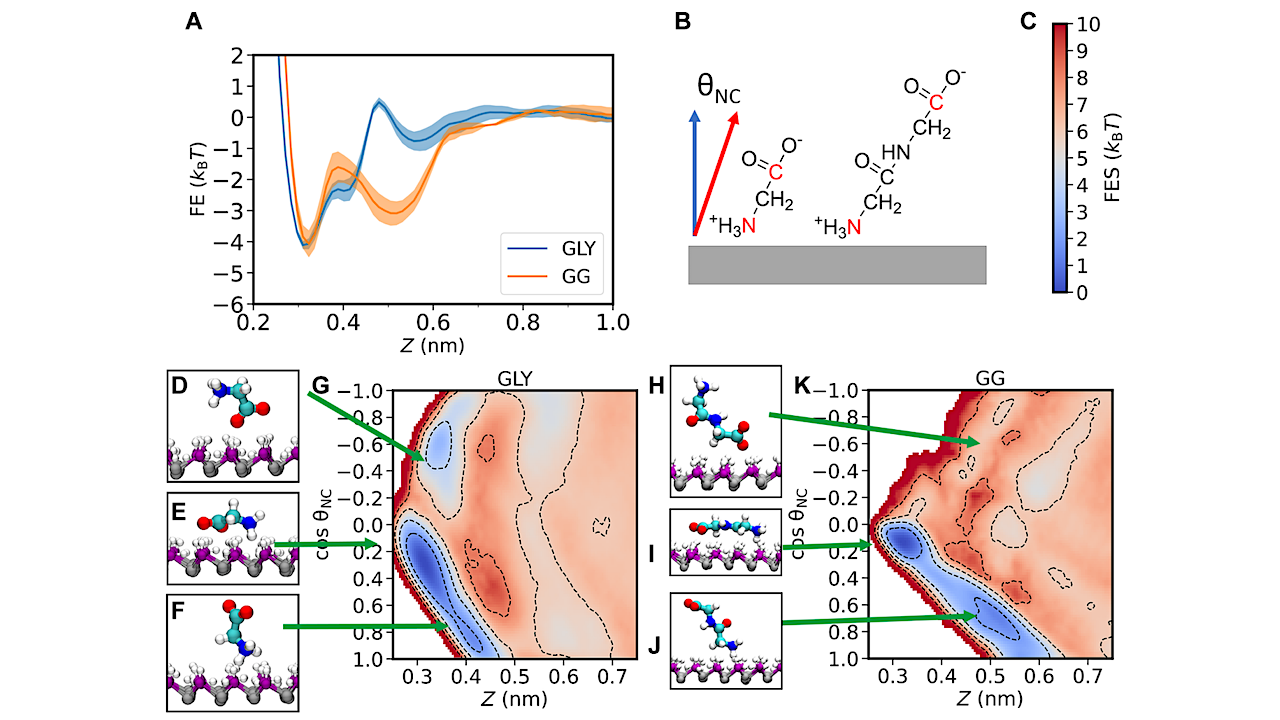
We investigate the hypothesis that mineral/water interfaces played a crucial catalytic role in peptide formation by promoting the self-assembly of amino acids.
Using classical molecular dynamics simulations, we demonstrate that the α-alumina(0001) surface exhibits an affinity of 4 kBT for individual glycine or GG dipeptide molecules due to hydrogen bonds. In simulations with multiple glycine molecules, surface-bound glycine enhances further adsorption, leading to the formation of long chains connected by hydrogen bonds between the carboxyl and amine groups of glycine molecules.
We find that the likelihood of observing chains longer than 10 glycine units increases by at least five orders of magnitude at the surface compared to the bulk. This surface-driven assembly is primarily due to local high density and alignment with the alumina surface pattern.
Together, these results propose a model for how mineral surfaces can induce configuration-specific assembly of amino acids, thereby promoting condensation reactions.
On The Role Of α-alumina In The Origin Of Life: Surface-driven Assembly Of Amino Acids, Science Advances via PubMed
Astrobiology



